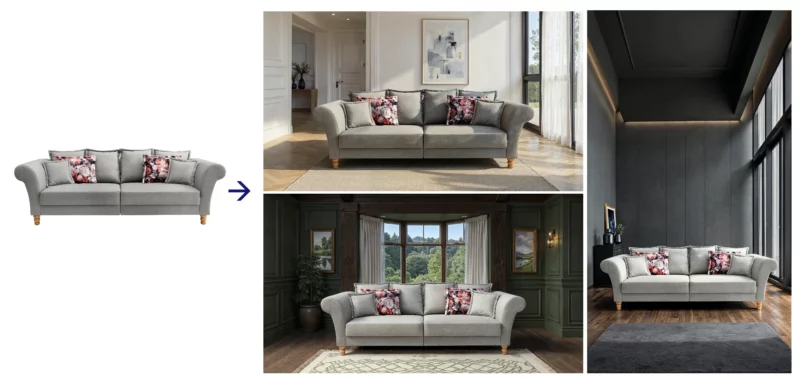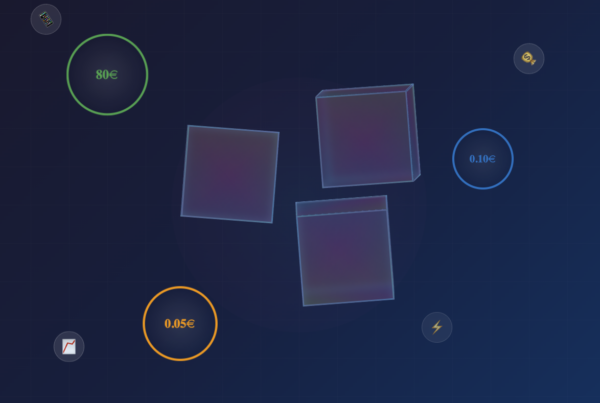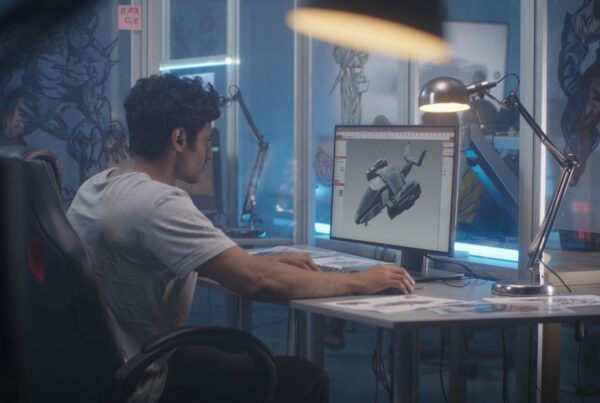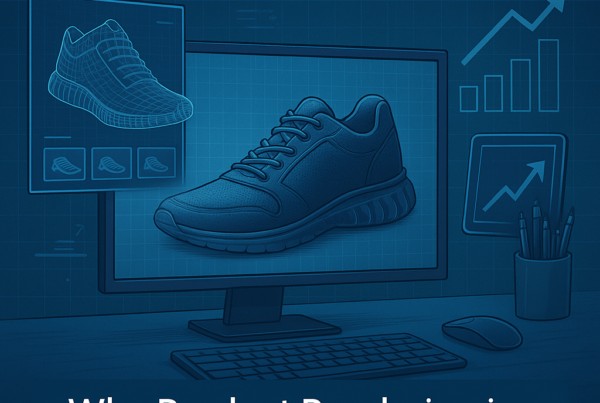In a rapidly evolving online furniture environment, product visuals can make or break a sale. Consumers no longer will accept simple product images. They want meaningful, lifestyle-focused images that help convey the positive emotion of how a sofa, table, or lamp will fit into their home. This is where the best AI background generation tools for furniture are reshaping the landscape. Brands that previously relied on costly and inflexible photoshoots can now replace that experience with scalable AI tools that generate high-resolution lifestyle images, virtual staging, and AR-ready assets comparable to conventional photoshoots in just a few minutes.
These background generation tools do more than just expedite product image generation for eCommerce, they enable even low-volume sellers to boost conversion metrics by providing consumers with a clearer mind’s eye of how products will look in the real world. From small low-volume sellers, using free background editing tools to enterprise retailers using online 3D rendering engines and AR plug-ins, AI background generation has become a necessity in digital furniture selling. The question really isn’t if to use AI background generation, but which tool to use.
Create AI Lifestyle Images with MAZING
Why AI Background Generation for Furniture Is Essential
For decades, furniture retailers and manufacturers have relied on costly photoshoots to produce high-quality lifestyle images. Traditional photography, however, is expensive, slow, and often too inflexible. A single sofa photographed in a showroom simply cannot meet the needs of multiple target groups, campaigns, or markets.
With AI background generation for furniture, brands can now create different variations of the same product in just minutes: an armchair in a Scandinavian loft, a cozy farmhouse, or a modern urban apartment. This flexibility not only reduces production costs but also allows brands to embed AI lifestyle images directly into AR and 3D experiences. Shoppers can instantly preview furniture in their own homes.
In short: AI doesn’t just make imagery cheaper – it makes furniture retailers more agile, customer-focused, and scalable.
The Biggest Challenge: Scalability with Product Variants
The most critical reason why AI background generation for furniture is indispensable comes down to the issue of product variants.
A single furniture manufacturer often doesn’t just have one sofa but:
-
20 different fabrics and leathers
-
15 different leg options
-
multiple sizes (2-seater, 3-seater, sectional, modular sofa)
-
plus color options, armrest shapes, and backrest heights
That means one single sofa model can quickly result in thousands of product variants.
Option 1: Traditional photoshoots are simply impossible. Each variant would need to be prototyped, transported, staged, and photographed – a logistical and financial nightmare.
Option 2: CGI renderings (manual 3D modeling) are more flexible, but every fabric, leg style, and new collection has to be recreated by 3D artists. This takes weeks, costs a fortune, and still doesn’t scale for large catalogs.
Option 3: AI background generation for furniture eliminates this bottleneck. From just a few base images, brands can generate endless variations. Fabrics, materials, and leg options can be combined using prompts or automated AI rules – no studio, no manual 3D models required.
Example:
A manufacturer with 1,000 sofas and 500 variants each would theoretically need 500,000 photos or renderings. With AI, this process can be scaled within hours instead of years.
This doesn’t just make AI cheaper – it makes modern furniture catalogs possible in the first place.
The Advantages of AI Background Generation for Furniture
-
Cost Savings: Up to 80% cheaper than traditional photography
-
Scalability: Even thousands of variants (fabrics, colors, legs, etc.) can be managed effortlessly
-
Speed: Images are instantly ready for Amazon, Shopify, or WooCommerce
-
Conversion Boost: Lifestyle visuals create stronger emotional connections, lowering returns and boosting sales
In summary: AI background generation for furniture not only creates better visuals – it unlocks the jump from limited photoshoots to unlimited product variety at scale.
Create AI Lifestyle Images with MAZING
What to Consider When Choosing Tools for AI Background Generation for Furniture
Not every tool delivers the same quality. Some create fast results, while others are designed for professional e-commerce workflows.
Checklist for Tool Selection:
✅ Photorealistic quality
✅ Seamless e-commerce integration (Shopify, Amazon, WooCommerce)
✅ Flexible pricing (per image or subscription)
✅ Support for AI lifestyle images & AR previews
✅ Easy-to-use for marketing, design, and sales teams
✅ Keeps the furniture piece consistent and unchanged
Best Tools for AI Background Generation for Furniture (2025)
Here’s an overview of the leading providers:
1. Mazing – Market Leader for AI Background Generation & AR
✔ Built specifically for the furniture industry
✔ Uploaded cutouts remain 100% consistent
✔ From just a few product photos → photorealistic 3D models & lifestyle images
✔ AR integration for Shopify, Amazon & WooCommerce
✔ Retailers report +42% higher conversions
👉 Best for: Brands that need high-quality, consistent, and scalable AI background generation for furniture.
 2. Canva – Quick Background Swaps
2. Canva – Quick Background Swaps
✔ Simple design tool with AI background features
✔ Great for social media content
❌ Limited realism, not scalable
👉 Best for: Small retailers who need fast, lightweight visuals.
3. Fotor – Budget-Friendly Entry Tool
✔ AI background editing, easy to use
✔ Affordable for small to mid-size retailers
❌ No AR support, can distort furniture proportions
👉 Best for: Testing AI background generation for furniture on a smaller scale.
4. ChatGPT with Image Generators – Creative Concepts
✔ Extremely flexible for styles (Scandinavian, loft, farmhouse, etc.)
✔ Fast results
❌ Furniture items often change or become inconsistent
⚠️ Warning: Great for brainstorming and moodboards, but unsuitable for e-commerce catalogs.
5. Virtual Staging Tools (Real Estate Platforms)
✔ Full-room renders in seconds
✔ Useful for marketing scenes
❌ Weak for single furniture items
❌ No direct e-commerce integrations
👉 Best for: Complete room visualizations.
Create AI Lifestyle Images with MAZING
Mazing: AI Lifestyle Images & Virtual Staging for Furniture
As one of the pioneers in this space, Mazing is a real game changer for furniture brands. Unlike general-purpose tools, Mazing was purpose-built to solve the unique challenges of online furniture retail: how can product visuals be made scalable, affordable, personalized, and visually appealing at the same time?
Mazing requires only a handful of product photos and transforms them into photorealistic 3D models that can be reused across product listings, lifestyle renderings, and augmented reality experiences. This makes costly photoshoots unnecessary and gives marketing teams a unified visual standard from a single source of truth.
What makes Mazing unique is its ability to combine AI background generation with virtual staging. Brands can display an infinite number of furniture variations in different spaces, tailored to specific contexts and audiences.
The results speak for themselves: retailers using Mazing report +42% higher conversion rates and significantly fewer returns, as customers can preview furniture in realistic environments before purchasing. In addition, Mazing has released integrations for platforms such as Shopify, Amazon, and WooCommerce, enabling seamless scaling across channels without manual effort.
For brands looking not only for cost-effective solutions but also for highly relevant and scalable shopping experiences, Mazing is the clear choice. It combines the speed of AI with the quality of professional 3D rendering.
Pricing Comparison: Free vs. Paid AI Background Tools
The price range for AI background generation for furniture spans from free entry-level solutions to advanced enterprise platforms.
-
Free options such as Canva or Fotor are suitable for small retailers or quick tests. They allow simple background swaps or basic lifestyle images, but cannot match the realism, scalability, or e-commerce integrations required for professional use.
-
Paid solutions like Mazing are designed for retailers managing hundreds or thousands of products. They unlock advanced features like AI lifestyle rendering, virtual staging, and direct integrations with Shopify, Amazon, and WooCommerce, ensuring consistent, high-quality visuals across all channels.
While free editors may sound attractive at first, they often compromise the customer experience. Shoppers expect photorealistic lifestyle images that are consistent and reflect brand quality. Professional AI platforms deliver exactly that—and typically save money compared to traditional photography (up to 80% cost savings per product image).
Choosing a professional tool like Mazing pays off quickly: brands report a positive ROI within just a few months and significantly fewer returns thanks to improved purchase decisions.
👉 Conclusion: Free tools are fine for entry-level needs. But for serious online furniture retail, brands need scalable, consistent, and integrated solutions like Mazing.
Detailed Summary
These sections illustrate why Mazing stands out as the leading platform for AI background generation for furniture and why professional solutions are superior:
Core Problem in Furniture Retail
-
Traditional photoshoots are expensive and not scalable.
-
CGI is time-consuming and requires specialized skills.
-
The sheer number of variants (fabrics, legs, colors) makes traditional methods impossible.
Mazing as the Solution
-
Transforms a few photos into 3D models + AI lifestyle images + AR experiences.
-
Provides a single, consistent visual standard for marketing and sales.
-
Combines lifestyle rendering with virtual staging, allowing endless product variations in different settings.
-
Proven results: +42% conversion uplift, fewer returns, greater customer satisfaction.
-
Direct integrations with Shopify, Amazon, WooCommerce → effortless scalability.
Cost Perspective
-
Free tools (Canva, Fotor) = fast and cheap, but insufficient for professional requirements.
-
Paid tools like Mazing = realistic, scalable, integration-ready, up to 80% cheaper than photography.
-
Positive ROI possible within months.
Conclusion
-
Free tools = entry-level option.
-
Mazing = the future-proof solution that combines scalability, realism, and seamless e-commerce integration.






